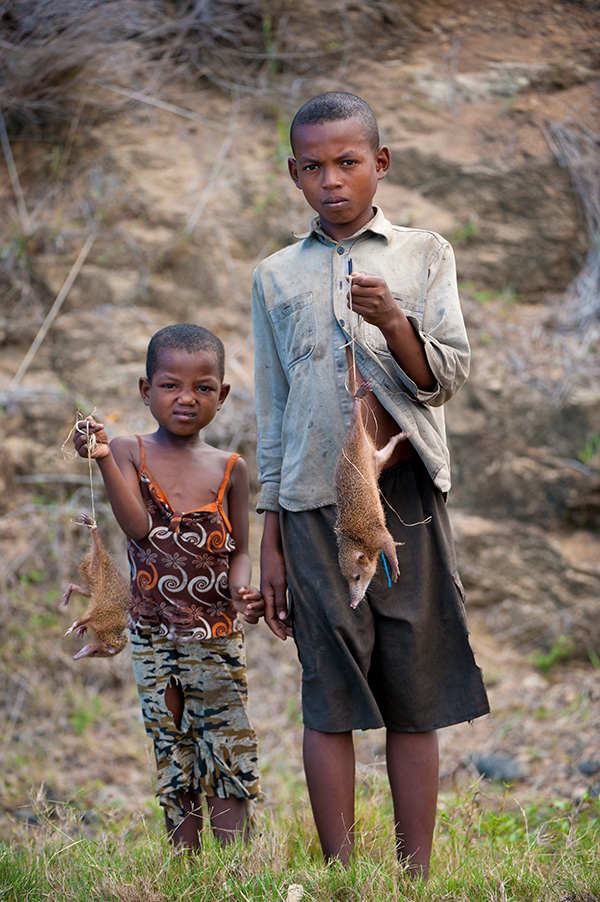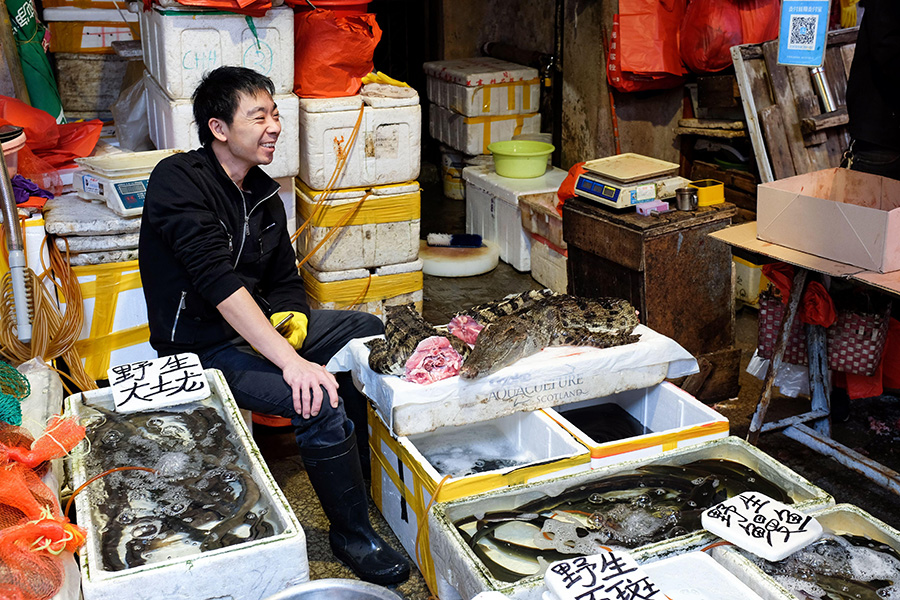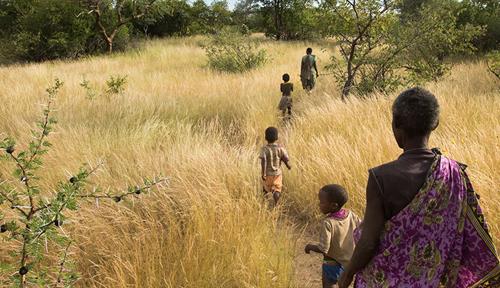In defense of wild meat’s place at the table
Sustainable and safe consumption of wildlife is possible, and important for those who depend on it, says a conservation researcher
Support sound science and smart stories
Help us make scientific knowledge accessible to all
Donate today
For the past 25 years, conservation scientist E.J. Milner-Gulland of the University of Oxford in the UK has studied the often-opaque trade in wild animal meat, hides, horns, tusks, scales, bones and more, across Africa and Asia. Her initial interest was in understanding how much hunting would be sustainable — without causing worrying declines in wild animal populations — but she soon realized that understanding hunters and the people who eat wild meat was equally important.
When some conservation and animal welfare organizations started calling for a ban on wild meat during the Covid-19 pandemic, citing health risks and conservation concerns, Milner-Gulland and over a dozen colleagues protested. They argued that while certain hunting practices create unacceptable risks for endangered animals and human health, other forms of hunting are largely sustainable and crucial to people’s livelihoods.
Based on their studies, they believe that blanket bans on wild meat hunting, trade and consumption would be both unfair and unlikely to benefit conservation efforts. Bans might make hunting and trading harder to monitor by pushing it underground, they think, and force people to shift to potentially more damaging activities.
Milner-Gulland thinks we should treat wild meat like we do other kinds of meat: as a respectable source of food and income that should be regulated to improve security, sustainability and animal welfare — a topic she and colleagues explore in the Annual Review of Environment and Resources. Knowable Magazine recently sat down with her to discuss what she thinks should most urgently be done. This conversation has been edited for length and clarity.
Why do people in the countries you’ve worked in hunt and/or eat wild animals?
It’s very mixed. Globally, tens of millions of people are estimated to rely on wild meat from several hundred different species. Some people are hunting to meet their own nutritional needs, and studies show wild meat can be an important source of protein, fat and micronutrients they would otherwise lack.
But many people are also hunting wild animals to sell so they can then buy household essentials or cheaper food, and are not eating much of it themselves. Farmers might be selling agricultural products only once a year, and they won’t necessarily have a savings account. So if they suddenly need cash, say for unexpected medical bills, hunting may be one of the few things they can do. Even people working in the cities may return to their hometown to hunt when things get tough. In that sense, the separation of commercial and subsistence hunting is often meaningless.

Two children selling tailless tenrecs, a common species, at the roadside in northern Madagascar. People living near natural areas may sell wild meat to supplement very limited budgets, or to be able to afford unexpected medical costs or repairs.
CREDIT: INAKI RELANZON / NPL / MINDEN PICTURES
Finally, some are making a good living out of purely commercial wild meat sales when they could be, and probably are, doing other business too. A lot of the unsustainability arises when outsiders are coming into an area to make a quick buck. There is quite a demand for wild meat. In Libreville, the capital of Gabon in Central Africa, for example, porcupine is a luxury good sold to rich urban consumers, while poorer people might eat cheap meat like frozen chicken day to day. Meanwhile, out in the rural areas in the middle of the forest, porcupine is cheap and poultry would be much more expensive. And a lot of wild meat is also exported, including to Europe and the US.
A significant proportion of the wild meat trade is informal, illicit or even illegal. How do you study the covert practices that most people will probably not want to admit to?
First, I should say that things that are informal aren’t necessarily illegal, things that are illegal aren’t necessarily unsustainable, and things that are legal aren’t necessarily sustainable. That being said, quantitative data on covert practices are obviously challenging to get, so we often triangulate between datasets, from market surveys to arrest data to interviews with key informants, to get a better picture of what’s going on.
It’s very hard to talk to people about it directly, so we’ve also been borrowing some of the questioning techniques that are often used in psychology to talk about sensitive subjects in our studies. This gives you a less precise answer than if people were asked directly and told the truth, but a more accurate one than if you took people at their word and they were actually not telling the whole truth.
One of these techniques is the unmatched count technique, which uses cards with a list of activities, only one of which is the sensitive activity — say, eating wild meat. Some people get the full list, others get a list without the sensitive activity in it. We ask people how many of the activities on the list they’ve engaged in over the past 12 months — not which ones, just how many. This means they don’t have to confess, because if they say “three,” I don’t know which three activities they are talking about. Having randomly assigned people to one or the other of these lists, we can get the average number of activities people say they engage in from the full list versus the one without the sensitive activity. From the difference between the two, we can then calculate the proportion of the population involved in this sensitive activity.
Increasingly, animal products are also for sale online, even via social media. Is that helpful for your research?
As scientists, it’s quite difficult for us to infiltrate those closed groups online because the university ethics boards that review our studies require us to declare who we are when we are doing research. So we’ve had to say no to investigative organizations that wanted to work with us undercover in this way. If we come across illegal activity online while we’re not doing research, of course we can let the authorities know. Just the other week, a colleague found saiga antelope horn on sale online, and we have reported this.
Can social media also be helpful in promoting more sustainable consumption of wild meat, such as through influencers and ads?
A really nice campaign called “Yoka Pimbo” was recently run by the government of the Democratic Republic of the Congo, supported by the Wildlife Conservation Society, to model cultural dishes that don’t contain wild meat. They’ve worked with influencers to tell people they can eat in a Congolese way without eating wild meat, which is a really interesting approach — I’m curious to see how that works out.
We’ve done some work in Vietnam ourselves to try and understand who is consuming pangolin and other wild meat in restaurants and why, to help with thinking about what alternative restaurants and dishes a celebrity-endorsed campaign might promote. We’ve also worked on saiga horn, which is used in various traditional treatments, to understand how people react to different framings of the message. Interestingly, the message that resonated most with the relevant people was a simple conservation message — “You are putting this endangered species at risk.” People said, “I bought it in a shop, so I thought it was legal and sustainable.” I think that’s understandable.
So, a better question may be why this is legally sold in shops, if it’s coming from illegal or unsustainable sources? Maybe that’s where we have to focus, instead of putting the entire burden on consumers to change their habits.

The “Yoka Pimbo” campaign is a collaboration between the government of the Democratic Republic of the Congo and the Wildlife Conservation Society to promote local dishes without wild meat. The text, largely in French, reads: “Allow yourself to be seduced by good Congolese cuisine without bushmeat.” (“Nyama zamba” is Lingala for “bushmeat.”)
CREDIT: WCS
During the Covid-19 pandemic, some non-governmental organizations invoked the risk of disease to call for a total ban on the trade in wild meat, which you strongly opposed. Why do you think it’s a bad idea?
Calls to ban the commercial trade in wildlife are superficially attractive, but there is much underlying complexity, so a blanket ban is not likely to have the desired effect. Once people are deprived of this source of food and livelihood, there is the danger that they will resort to other strategies with unforeseen consequences on conservation, such as clearing more forest to cultivate crops.
After the first SARS outbreak, the Chinese government had invested quite heavily in the farming of frogs, snakes and salamanders. This was done in order to have a regulated trade in captive-reared wildlife that could be produced in controlled conditions, thereby reducing the risks of disease from wild-caught animals and from more risky groups like mammals. There were many people whose livelihoods depended on those farms, and they were also selling these animals in the wildlife markets. That entire industry, which was supposed to be sustainable, was destroyed during the pandemic. That seems unfortunate to me, especially since there is no definitive evidence that the pandemic started at a market.
It’s quite possible that the result of a blanket ban on trade will be lower wildlife populations, once you take the unintended consequences into account. That said, I don’t think it’s a good idea to mix live, wild-caught animals of different species in unhygienic conditions at markets, both for animal welfare reasons and for public health.
Eric Nana from my group is doing some really good work in Cameroon and the Democratic Republic of the Congo, comparing wild meat supply chains under very different approaches to law enforcement. One of the things he’s finding is just because you don’t see protected species in markets, that doesn’t mean they’re not being sold. The trade in protected species may just not be as visible as that in common species, which makes it harder to monitor and regulate.

A market stall in Xiamen, China, selling fish and crocodilians. The local Chinese alligator is critically endangered, but other species might be sustainably bred in captivity.
CREDIT: TREVOR MOGG / ALAMY STOCK PHOTO
So I don’t think a blanket ban on wildlife consumption is a good idea, but that’s not to say that there should be no control of the wildlife trade, of course. We can’t have a free-for-all legal trade in all species. Species that are threatened by trade should definitely not be traded. But if people could have the tenure rights and ability to manage their hunting sustainably, what’s wrong with them selling meat, even with them developing a market for premium, certified wild meat which might be sold to expensive restaurants?
I’m a vegetarian myself, but I don’t think there’s anything fundamentally wrong with eating wild meat. Our emphasis needs to be on establishing a more sustainable relationship between people and wildlife.
What might be a better approach to regulating the trade in wild meat?
There are a number of competing objectives when we think about what we want for wildlife trade — we need to address public health risks, conservation risks, animal welfare risks and livelihood risks. Every single one of these is a valid concern, but you can’t pursue just one and ignore the others. I think we need a risk-based approach to decisions on wildlife trade policy that assesses each species and each kind of trade on its own risks and benefits.
Some things are entirely unproblematic. Many people in Africa trap crop pests like cane rats around their fields, for example, in order to save their crops but also to eat and to sell, and there’s nothing unsustainable or illegal about that.
Great apes, however, which are highly threatened and share a lot of diseases with humans, should not be hunted, traded or eaten, full stop. Bats are not generally as threatened, but they pose a significant public health risk, so there is absolutely no excuse for trading bats across long distances — it’s just dangerous.
Frogs, on the other hand — why couldn’t frogs be more widely sold, if they are not at risk and you can guarantee sustainability? And why not support a sustainable trade in small antelopes like duikers as well, with safeguards for sustainability, animal welfare and public health?
You know, we trade in domestic livestock all the time. You could just bring wildlife under the same rules, and have veterinary surveillance, animal welfare regulations, subsidies to stimulate certain practices. Governments usually don’t think about it that way, because the trade in wild meat is mostly informal. It doesn’t contribute to GDP, so it’s seen as something not worth investing in.
What might a more sustainable system for wildlife hunting and trade look like?
There is the idea of community hunting areas controlled by local people, which conservationists have been trying to implement for a long time. Of course, community-run hunting areas are common. Indigenous groups may have customary rules for their lands, and those can be very effective. But I have yet to see a single example of an externally initiated effort to create a new community hunting area that has been sustainable in the long term. One reason is that it’s complicated to make this approach work in practice when it’s not based on existing institutions, since new external institutions often lack local legitimacy.
Another reason is that these projects are rarely properly evaluated. Finally, sustainability is often very hard to measure. How do you monitor wildlife populations without covering the forest in expensive camera traps? It can take a long time to get dependable trends from monitoring, especially for rare animals. If you’re looking at long-lived ungulates like duikers, it may take 10 years to get dependable trends.
Might it be helpful to breed wild animals for consumption instead?
Wildlife aren’t domesticated. The reason it took us tens of thousands of years to domesticate animals is that domestic animals are different. They can be kept at higher density, they’re not stressed by human presence — we’ve bred these animals to be efficient producers of food, and to be farmable.
Duikers and pangolins, for example, are solitary species that can’t be kept a high density. So I think there aren’t that many wildlife species that are good for farming, except things like rodents, frogs and reptiles. In Southeast Asia, some people have backyard crocodile farms, and I think that could work quite well.
I think we have to move away from large-scale farming of domestic livestock like cows, which require land and resources for grazing and feed, and contribute to climate change. But a lot can be done with different protein sources. It might be helpful to raise more chickens, rabbits or fish near the cities, as alternatives to wild meat, which is not often done in sub-Saharan Africa, for example. Most of the chicken and fish currently on sale is imported frozen and often seen as a low-quality alternative to bushmeat, but local meats could be well-received.
Might it help to offer alternative livelihood options in places where the trade in wild meat is unsustainable?
In principle, of course, alternative livelihoods are what people need, both for food and income. But in practice, the results of these projects have been dire. I think organizations that come in to try and reduce unsustainable hunting should start by talking to local people to understand their perspectives.
That sounds so obvious, but it’s still rarely done. People come in with their preconceptions — that it’s got to be chickens, or beekeeping, or crafts — and these projects routinely fail, because the people who implement them don’t consider the barriers to change or the reasons people are hunting or consuming wild meat. Until you’re working with local people to devise things they want, conservation won’t work.
We should be able to do better. It’s about allowing people to take their own paths towards a sustainable economy, whether that includes sustainable wildlife harvesting, farming, honey, crafts or remote work in IT.
Finally, some ecologists argue that even in the United States and the European Union, it might be more sustainable to restore large wild herds of herbivores that promote carbon storage and biodiversity, and allow a number of those to be hunted instead of the intensive animal breeding we have today. Does that make sense to you?
Well, we can’t all eat the amount of meat we eat today from wild sources, because wildlife just isn’t at that density. But the impacts on biodiversity of eating domestic meat are also very significant. So absolutely, from an environmental sustainability point of view, I think you’re better off eating small amounts of venison than you are eating large amounts of beef.
In the UK, we’ve got massive overpopulation of deer. So the more people shoot and eat deer, the better, because the deer are eating all the young trees. We tend not to think about deer in the same way we do about wild animals hunted for meat in Africa, but perhaps we should.
Venison is seen as a luxury product, and there were no calls to ban hunting of deer in the UK when discussion of the role of wild meat in disease transmission took place during Covid-19, as opposed to the calls to ban wild meat elsewhere in the world. There’s often no recognition that we should be more even-handed in our treatment of hunting around the world.
10.1146/knowable-050924-2
TAKE A DEEPER DIVE | Explore Related Scholarly Articles






